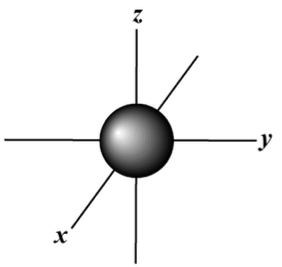
The bond angle, 115˚, slightly smaller than the trigonal-planar angle of 120˚, has been measured in the laboratory. Which yields an overall structure that looks like this. The optimal structure is a resonance between these two structures In the single-double N–O arrangement, N has eight electrons, and the formal charges are lower, while still producing our overall -1 charge. First, N only has 6 valence electrons, and second, the formal charges might be reduced in another arrangement. Recall that formal charge is (number of valence electrons) - (number of bonds) - (number of electrons in lone pairs).īecause there are two oxygens, our negative charge is accounted for here. The VSEPR theory therefore predicts a trigonal planar geometry for the BF3 molecule, with a F-B-F bond angle of 120o. The formal charges on the nitrogen and the two (equivalent) oxygens are shown. Thus, although the VB, VSEPR, and Hybridization theories are outdated and have many limitations, they, along with the Molecular Orbital Theory provide us with a toolbox for almost any molecule possible.Solution: The geometries of these two ions are related, but there are subtle differences that we can understand by looking at Lewis structures, formal charges and VSEPR theory.Ĭonsider one possible bonding arrangement of NO 2 -, with single N–O bonds.


Despite various shortcomings, complete disregard of one theory and not the other would hinder our ability to describe the bonding in molecules. While MO theory is more involved and difficult, it results in a more complete picture of the structure of a chosen molecule. Unlike the VB theory, which is largely based off of valence electrons, the MO theory describes structure more in depth by taking into consideration, for example, the overlap and energies of the bonding and anti-bonding electrons residing in a particular molecular orbital. I quote an article from Chemistry LibreTexts:īoth the MO and VB theories are used to help determine the structure of a molecule. Nonbonding orbitals exert more repulsion on other orbitals for example, although the oxygen is a tetrahedral in H2O, the molecule s shape is bent. Nonbonding electron orbitals differ from bonding orbitals because nonbonding orbitals are concentrated closer to the central atom. Thus, both the Valence Bond approach as well as the Molecular Orbital approach are often required for an accurate prediction of the shape of a molecules. Electron repulsion between orbitals dictates molecular geometry. A famous example would be Di-Borane, or $\ce$.

However, there is the case of multi-centered $\pi$-bonds, also known as banana bonds, and the 4c-3e bonds, which can be explained only by the Molecular Orbital Theory. A central atom is defined in this theory as an atom which is bonded to two or more other atoms, while a terminal atom is bonded to only one other atom. Learn about VSEPR theory and shapes like trigonal planar or square. The reason is simple: The Molecular Orbital Theory tells us the arrangements of delocalized electrons in Molecular Orbitals, whereas, the other theories tell us the possible positions of the combined atoms after considering that the electrons are localized and repel each other. Overview edit VSEPR theory is used to predict the arrangement of electron pairs around central atoms in molecules, especially simple and symmetric molecules. Use our handy VSEPR chart to find the 3-D geometric VSEPR shapes of molecules and ions. The Valence Bond Theory, along with Hybridization and VSEPR, is the one that is generally used to find the shapes of molecules. It is very useful when it comes to finding the actual energies associated with every single orbital.

It is generalizable, and can be extended to even semiconductors and superconductors. The MOT tells us that when atoms combine, they form molecules orbitals, which are lower in energy than the atomic orbitals. It can be extended to a large number of Covalent compounds, but it has a few limitations as far as ionic compounds and multi-centered bonds are concerned. In general, the VSEPR theory is used to predict shapes of molecules and ions, not the Molecular Orbital Theory. There are successes as well as shortcomings of both the Molecular Orbital Theory, and the other three. The Molecular Orbital Theory is, in practice, a complement to the Valence Bond Theory, Hybridization and VSEPR. Reason being that so far this is the only way devised, which works most of the time.


 0 kommentar(er)
0 kommentar(er)
